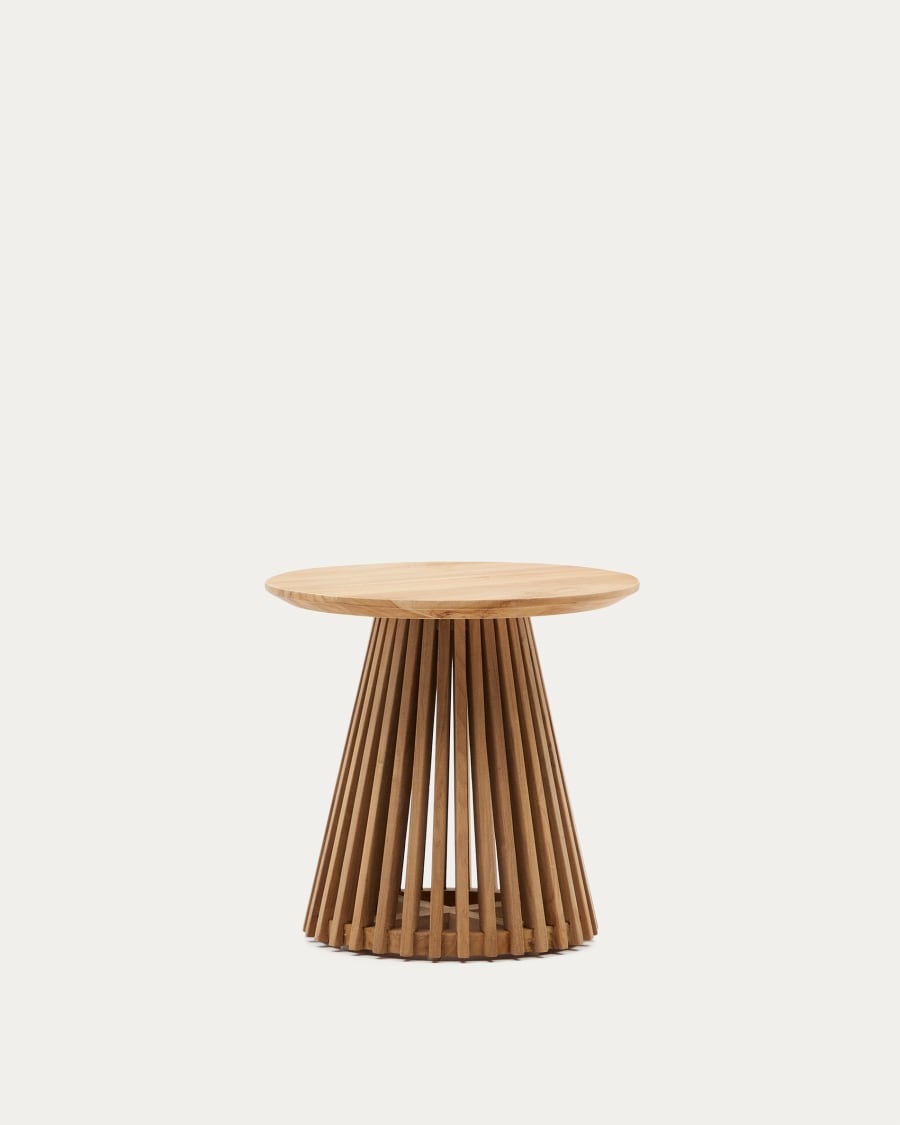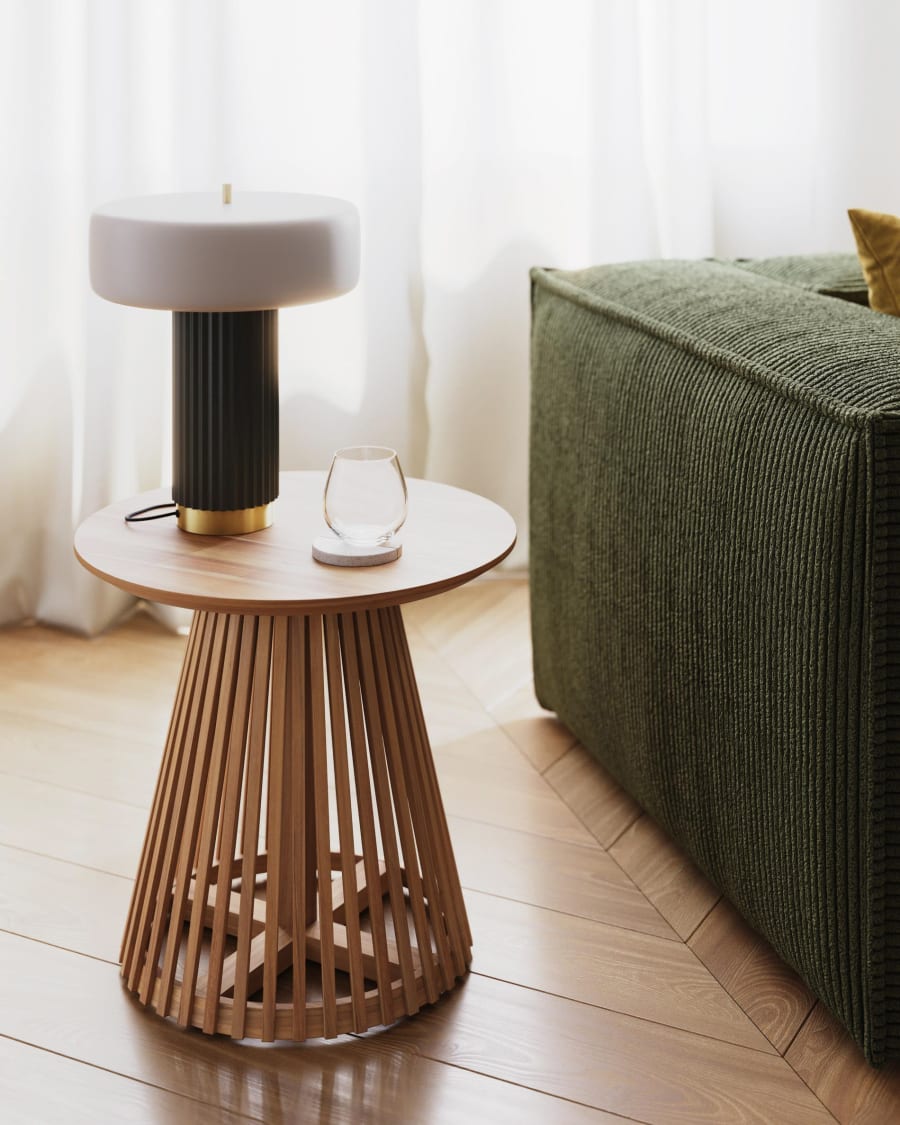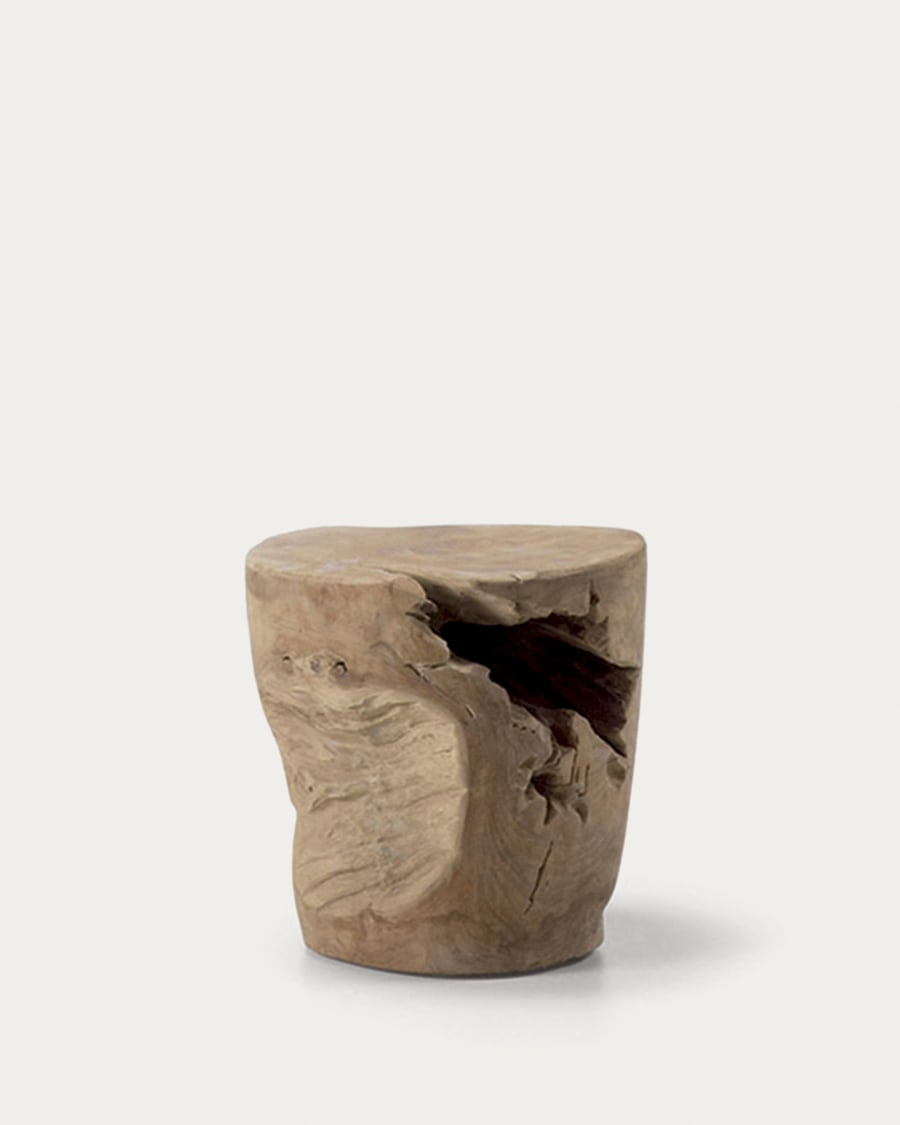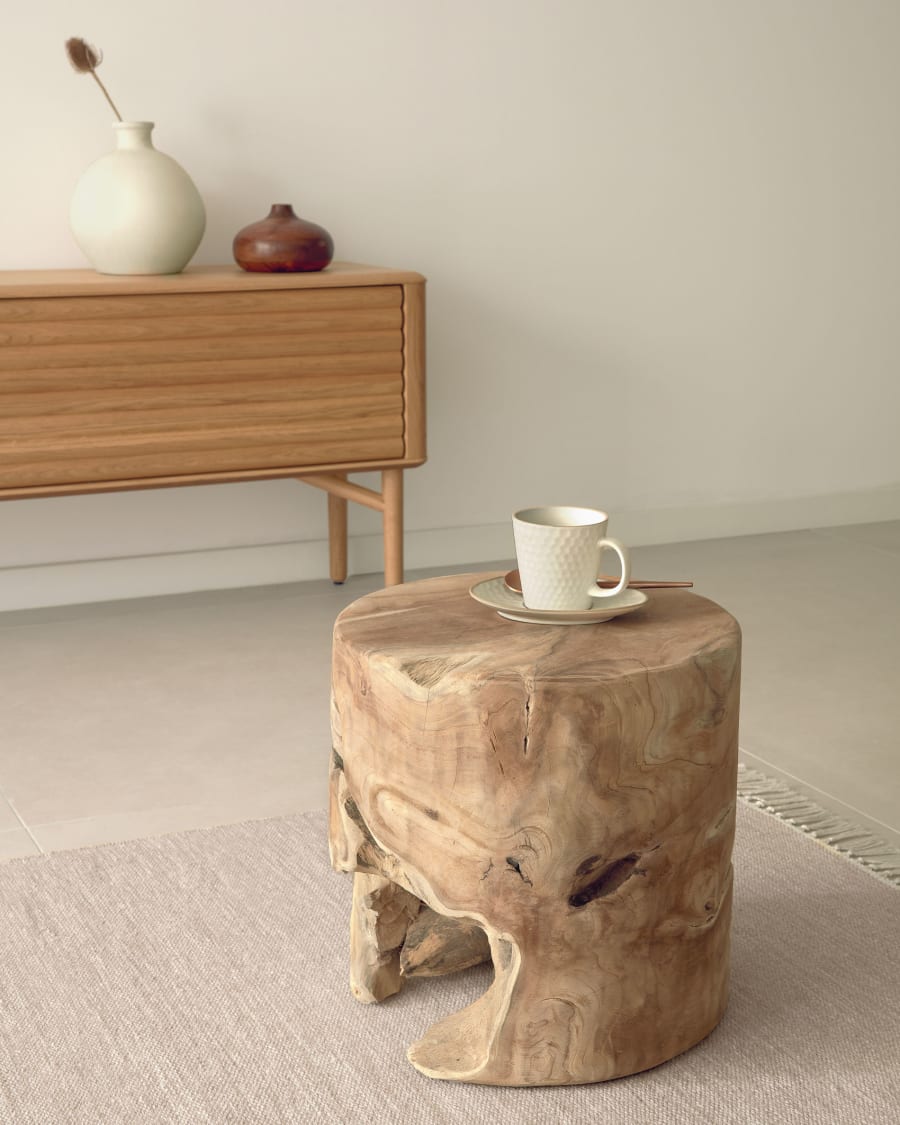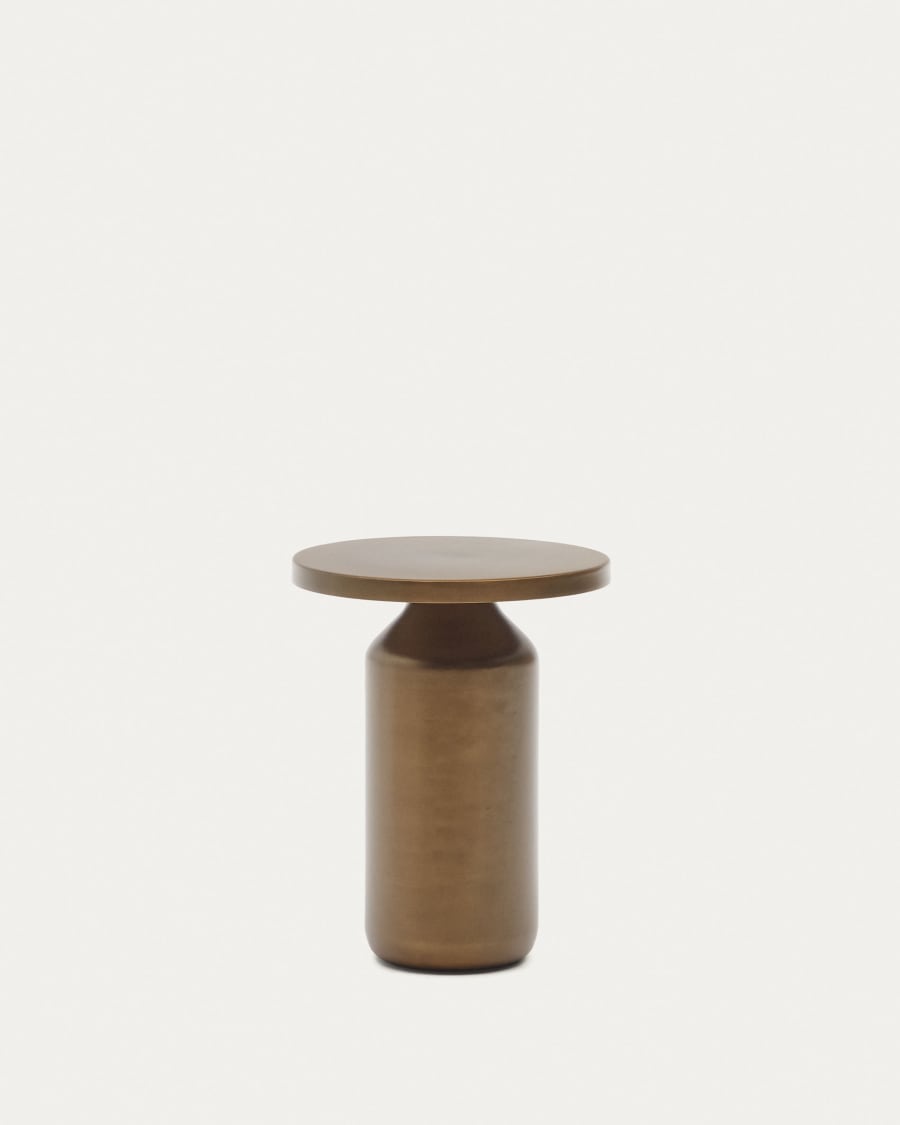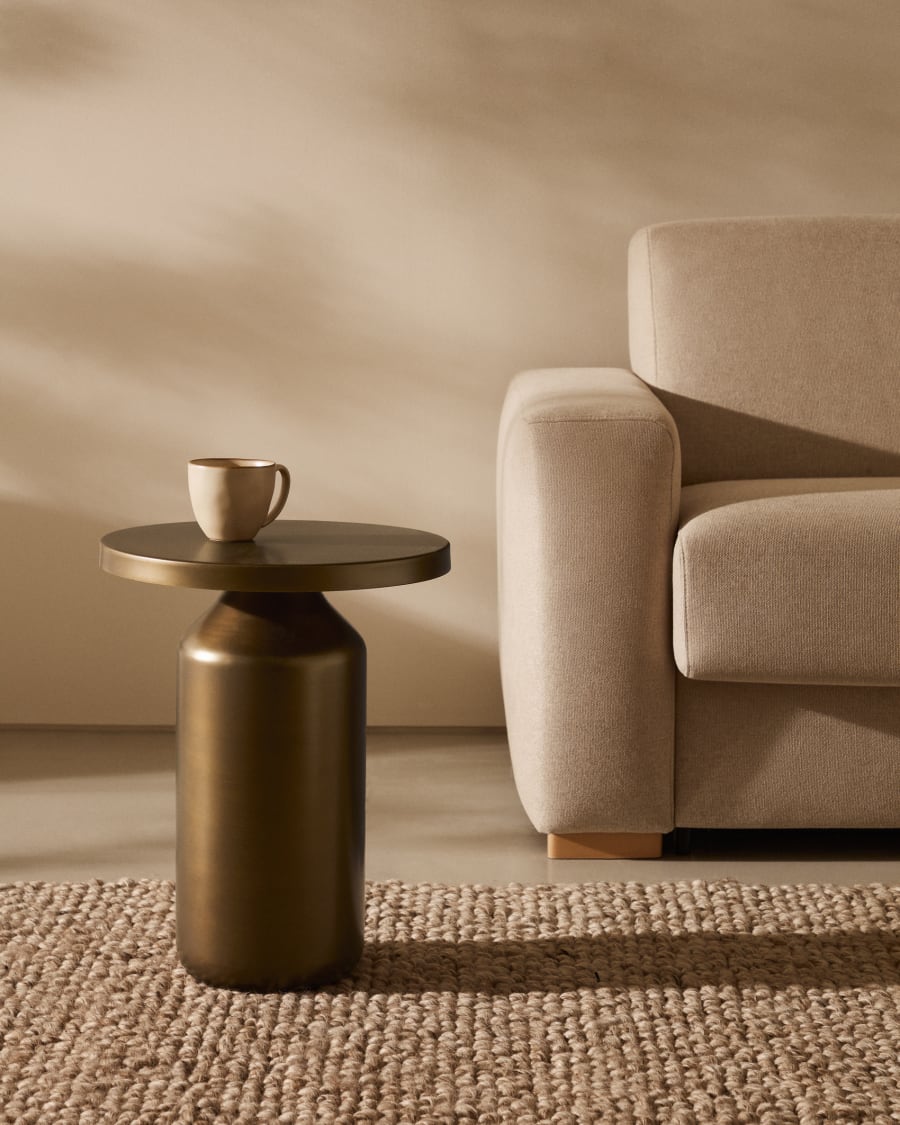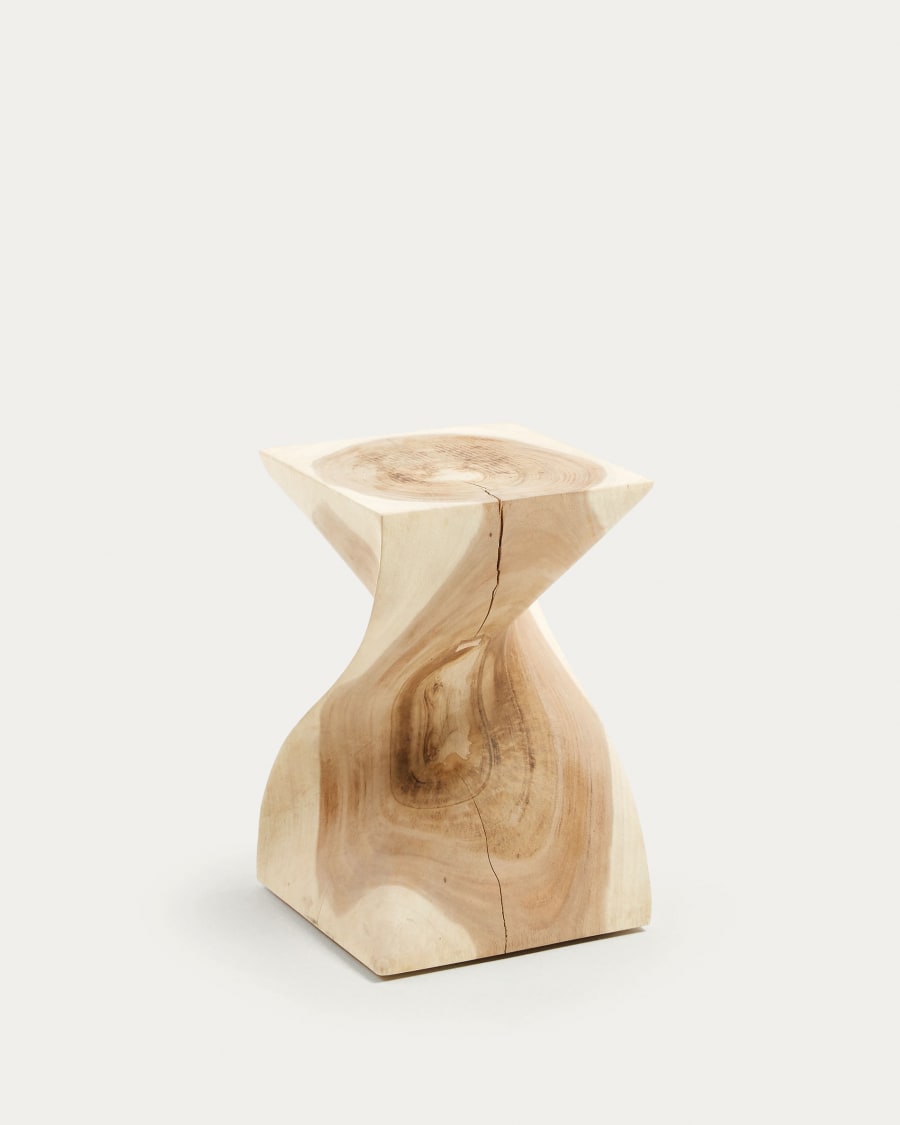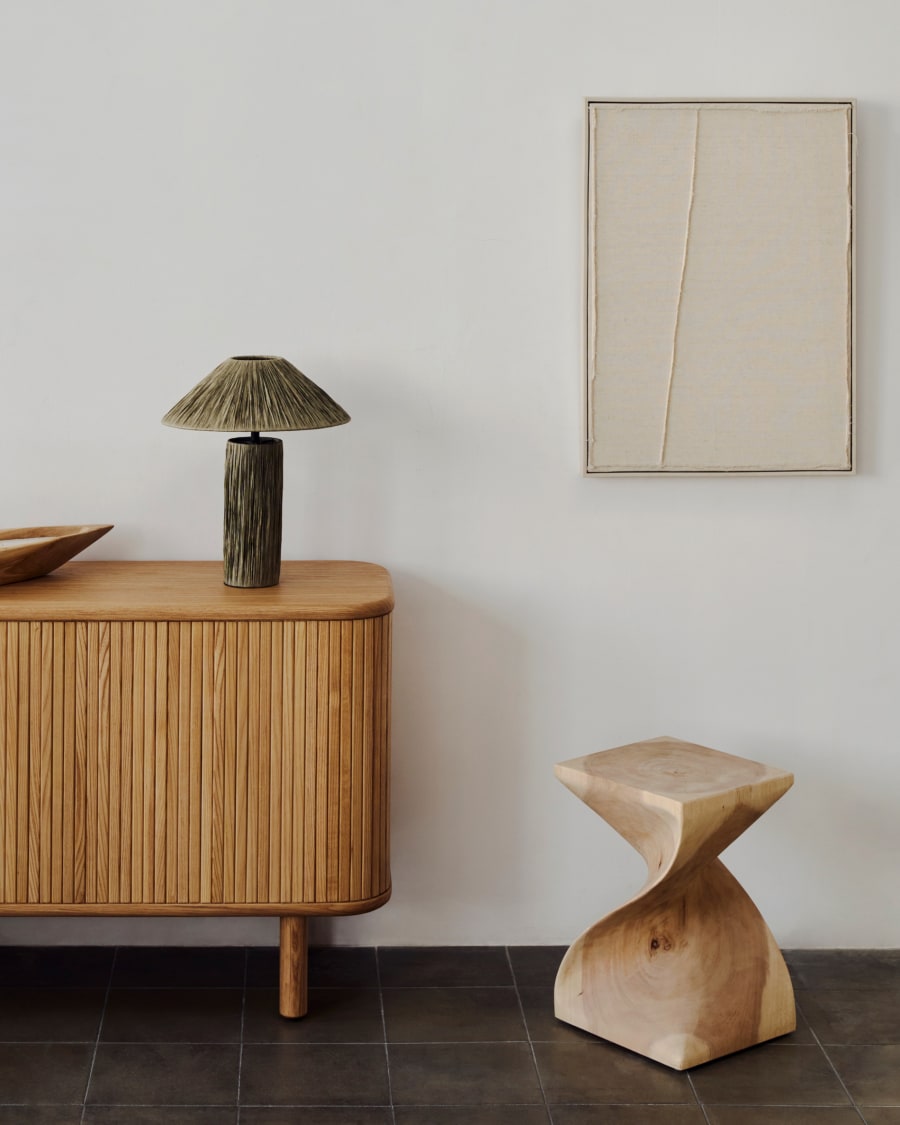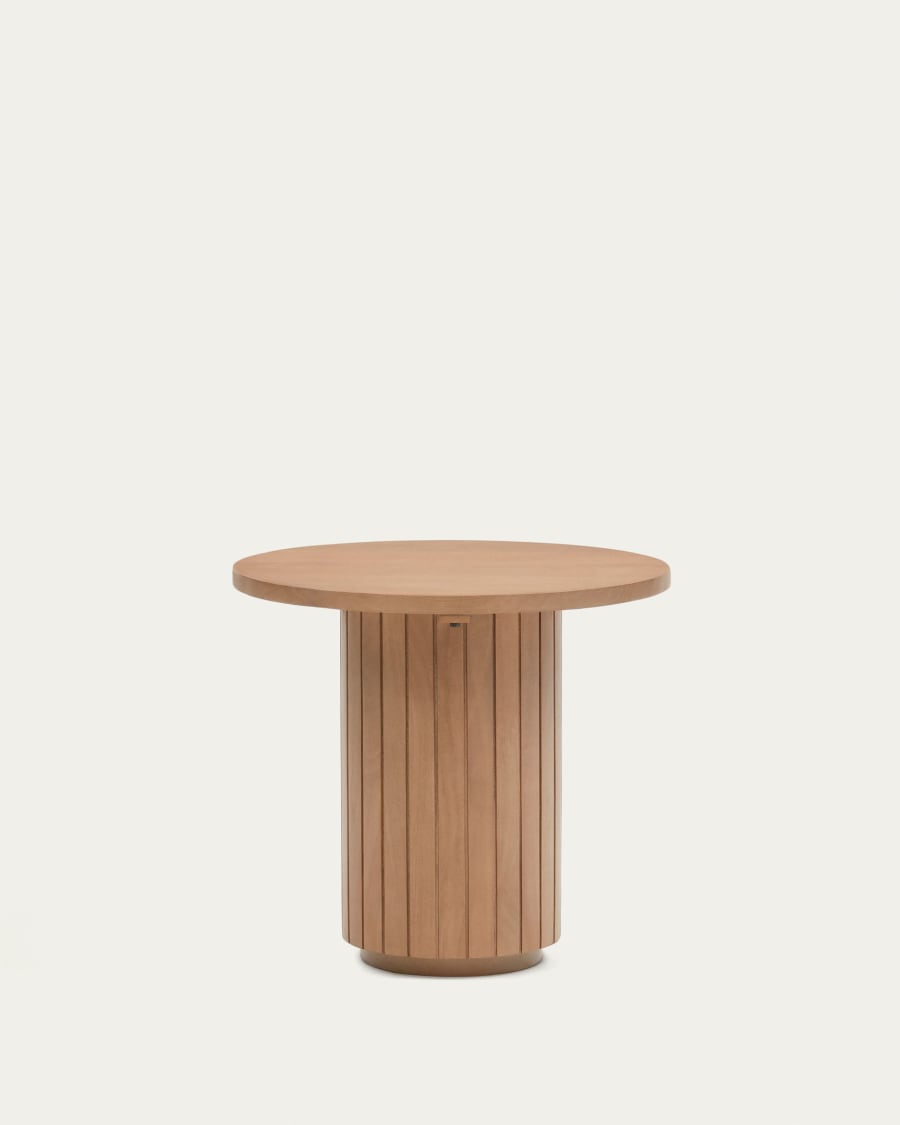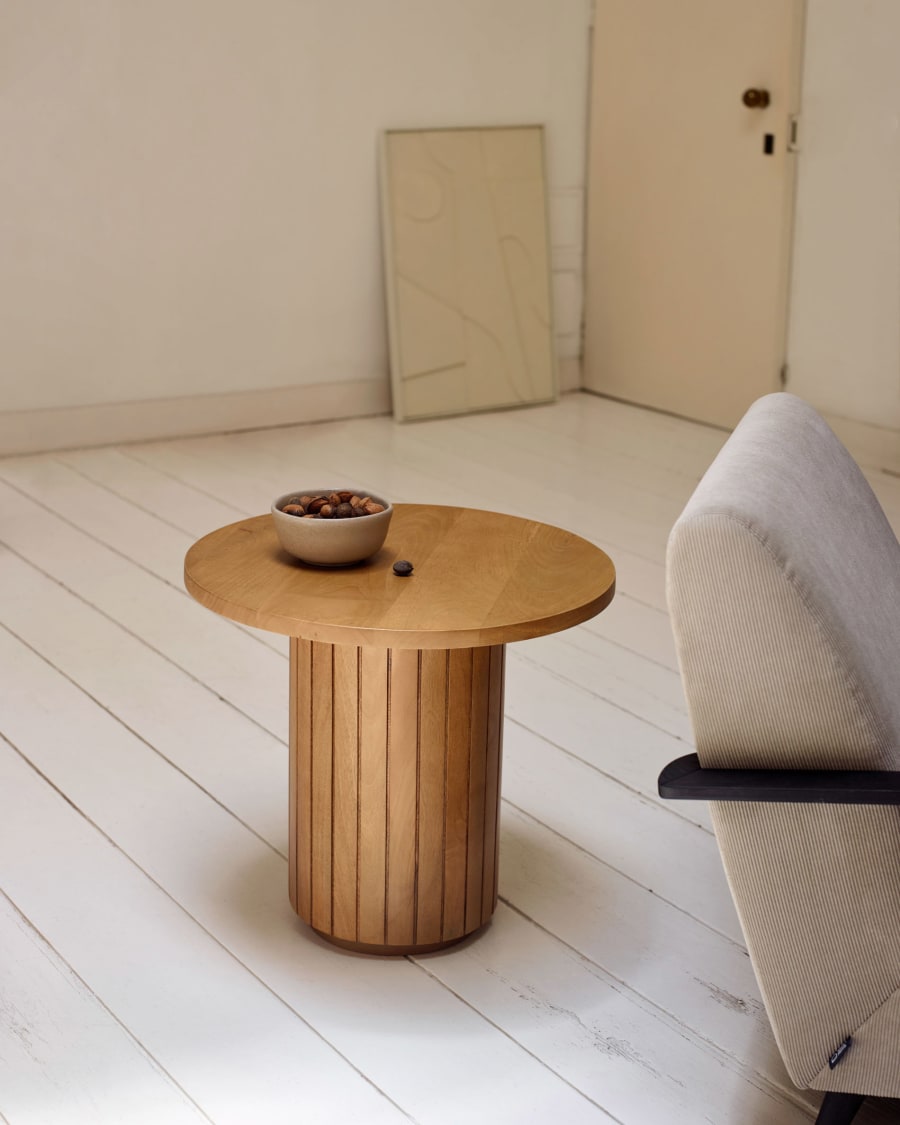- Home
- Japandi Side Tables
Japandi Side Tables
Japandi Side Tables: Find the Balance of Simplicity & Style
At the heart of Japandi side tables lies a harmonious blend of Japanese and Scandinavian design principles. This hybrid style merges the Scandinavian emphasis on minimalism with the Japanese appreciation for natural imperfections, creating furniture that feels both modern and timeless.
Wabi-sabi, a key Japanese concept celebrating imperfection, is evident in the subtle variations of wood grain and organic textures. Meanwhile, Scandinavian functionality ensures every table serves a purpose without visual clutter. The result? Pieces that balance warmth and practicality, perfect for contemporary living spaces.
Material Choices: Natural Elements Meets Durability
Japandi side tables prioritize natural materials like solid oak, walnut, and sustainably sourced wood. These are often finished with hand-applied linseed oil or matte lacquer, enhancing the organic feel while protecting against wear.
The focus on durability is clear: kiln-dried wood resists warping, and black lacquered feet add subtle contrast without overwhelming the design. Even small details, like anti-slip wool felt pads, reflect the Scandinavian commitment to practical elegance.
Dimensions and Practicality: Compact Elegance for Modern Living
Typical Japandi side tables range around 50 cm in height, aligning with standard sofa or bed heights for seamless integration. Compact designs, like the 45 x 40 cm footprint, make them ideal for small spaces without sacrificing style.
These tables serve multiple roles: nightstands, plant stands, or accent pieces. Rounded edges and lightweight builds ensure safety and adaptability, while extendable options (e.g., oval-shaped designs) cater to dynamic living environments.
Enhancing Contemporary Interiors: Neutral Tones and Timeless Appeal
Neutral palettes oak, black, and muted greys allow Japandi side tables to complement diverse decors. Their clean lines and unadorned surfaces create visual calm, a nod to both Nordic hygge and Japanese Zen.
By combining natural textures with minimalist forms, these tables become subtle focal points. Whether paired with bold art or left bare, they embody a "less is more" ethos that elevates modern interiors without demanding attention.
What are Japandi side tables?
Japandi side tables merge Japanese and Scandinavian aesthetics, creating a harmonious blend of serenity, calm, and minimalism. These pieces embody functional simplicity, rooted in two distinct philosophies: the Scandinavian pursuit of hygge (coziness) and the Japanese concept of wabi-sabi (beauty in imperfection). Imagine a design that feels both timeless and deeply connected to nature this is the essence of Japandi.
At their core, these tables prioritize organic textures and clean lines. They reject clutter, focusing instead on natural materials like oak, bamboo, and linen. The result? A quiet elegance that transforms modern interiors. These tables aren’t just functional, they symbolize a lifestyle valuing balance and intentionality.
Japanese and Scandinavian aesthetics collide here. Scandinavian minimalism contributes sleek silhouettes and practicality, while Japanese design introduces asymmetry and reverence for raw textures. The outcome? Furniture that feels grounded yet ethereal. Whether in a sleek urban apartment or a rustic home, Japandi side tables act as anchors of tranquility, proving that functional simplicity can redefine spaces without overwhelming them.
How to choose your japandi side table
Focus on materials and textures
Material selection defines the Japandi aesthetic, blending natural warmth with modern minimalism. Prioritize acacia wood or rotin (rattan) for organic textures that echo Japanese wabi-sabi principles. These materials highlight imperfections, adding tactile depth to sleek Scandinavian lines. For contrast, consider concrete-effect surfaces, like the Ozetta Concrete Side Table, which balances industrial rigidity with curved, soft forms. Avoid overly polished finishes; opt for matte textures that emphasize authenticity and earthy simplicity. Subtle variations in wood grains or rattan weaves ensure each piece feels unique, aligning with Japandi’s embrace of organic imperfection. For instance, the Wabi-sabi Nami table showcases natural wood grain, while the Kanso concrete-effect design merges matte rigidity with minimalist purity.
Consider the design and form
Japandi design thrives on geometric balance. Seek clean lines paired with organic curves, as seen in round textured tables with slatted sides. These details create visual rhythm without clutter. Slatted bases add airflow and lightness, preventing bulkiness. Prioritize asymmetrical yet functional shapes circular tops on triangular bases merge Japanese fluidity with Scandinavian practicality. Avoid ornate edges; let negative space enhance the minimalist ethos. The fusion of angular and soft forms mirrors the style’s core philosophy: harmonizing structure with nature’s unpredictability. For example, the Aalto table’s textured round top sits on a slatted base, merging transparency with grounded stability.
Evaluate functionality and purpose
Align the table’s form with its role in your space:
- Bedside table: Match height to your mattress (e.g., 55 cm for standard beds) for easy access to lamps or books. Compact designs with slim profiles suit low beds.
- Sofa companion: Choose a table 5-10 cm lower than your armrest to keep drinks or decor within reach. Rounded edges prevent accidents, while lightweight frames allow easy movement.
- Decorative focal point: Opt for stable bases and sculptural textures, like the Ozetta’s concrete curves, to hold vases or art without tipping. Textured surfaces add dimension, making the piece a conversation starter.
- Storage needs: Minimalist designs with hidden shelves or drawers offer discreet utility without compromising aesthetics. A lower shelf, for instance, can hold books or plants while maintaining visual lightness.
This balance ensures the table enhances utility and tranquility in contemporary interiors. By merging purpose with understated elegance, Japandi side tables become indispensable elements that elevate daily living spaces through thoughtful design. Their ability to merge form, materiality, and function creates a serene, intentional environment where every detail serves a purpose.
Integrating Your Side Table Into Your Space
Finding The Right Size And Height
Proportions are critical in minimalist Japandi interiors. A side table that’s too tall or bulky disrupts the serene balance. For bedrooms, align its height with your mattress top, ideally within ±5 cm. In living areas, match it to your sofa’s armrest height for seamless visual flow. A 35-45 cm range works well, inspired by designs like textured concrete-effect models or round organic silhouettes. Always measure your space first, this prevents overcrowding or awkward gaps. Consider depth too: a 30-40 cm depth ensures functionality without obstructing movement. Pair with Japandi dining chairs to maintain cohesive lines and uncluttered spaces.
Styling For Harmony And Serenity
Japandi styling thrives on intentional simplicity. Keep surfaces uncluttered to highlight the table’s craftsmanship. A curated arrangement of natural elements enhances the aesthetic, reflecting the "Ma" principle of purposeful emptiness:
- Pair with a single ceramic vase holding a dried branch for organic texture, celebrating asymmetry and natural imperfections.
- Display a small, intentional stack of design books as subtle decor, prioritizing muted tones and clean typography.
- Add a minimalist lamp with a linen or paper shade for soft lighting, avoiding harsh lines to preserve tranquility.
- Leave it bare occasionally to appreciate its sculptural form and materiality, letting wood grain or concrete textures speak.
Combine with complementary pieces like Japandi coffee tables or Japandi rugs to reinforce the cohesive blend of Japanese restraint and Nordic warmth. Opt for warm neutrals (beige, gray, or soft green) to unify the space. This approach creates a sanctuary where every element serves purpose and beauty, balancing functionality with organic textures like solid wood or natural fibers.
| Material | Care Instructions |
|---|---|
| Natural Wood (Oak, Ash) | Dust regularly with a soft, dry cloth. Wipe spills immediately. Avoid direct sunlight and heat sources. Use coasters to prevent marks. |
| Rattan | Dust with a soft brush or the brush attachment of a vacuum. Clean with a damp cloth and mild soap, then dry thoroughly to prevent damage. |
| Concrete Effect | Wipe with a soft, damp cloth. Avoid abrasive cleaners or harsh chemicals that could damage the finish. Use coasters to protect the surface. |
Regular maintenance ensures your Japandi side table retains its natural beauty while aligning with the design philosophy of functional simplicity. For wooden surfaces, periodic polishing with natural oils like linseed oil enhances durability without compromising the minimalist aesthetic. Rattan pieces benefit from occasional vacuuming to prevent dust accumulation in textured weaves, maintaining the organic texture central to Japandi’s blend of Scandinavian and Japanese elements.
- Avoid placing hot items directly on the surface.
- Lift, don't drag, the table to move it.
- Regularly check for any loose fittings and tighten if necessary.
Concrete-effect tables require gentle cleaning to preserve their contemporary finish. Use pH-neutral solutions to avoid chemical reactions with the material, reflecting the Japandi emphasis on harmonious material choices. For deeper stains, a paste of baking soda and water works effectively without damaging surfaces, a method consistent with the style’s focus on natural, low-impact solutions. Always dry surfaces immediately after cleaning to prevent water spots, maintaining the sleek, intentional look these tables bring to modern interiors.
FAQ
What defines a Japandi side table?
Japandi side tables blend the minimalist elegance of Japanese design with Scandinavian functionality. They emphasize clean lines, organic textures, and natural materials like oak, ash, or rattan. These tables prioritize both form and function, often featuring subtle storage solutions or sculptural shapes that evoke tranquility. The style embodies the Japandi philosophy of finding beauty in simplicity and creating spaces that feel balanced and serene.
What materials are commonly used in Japandi side tables?
Japandi side tables typically use natural materials such as light-toned woods (oak, ash) to highlight grain patterns, paired with textural contrasts like concrete effect or rattan. Some designs incorporate slatted wood for architectural interest. These materials connect interiors to nature while maintaining durability. For example, the "Round textured side table – Aalto" uses tactile finishes, while the "Kanso" model blends concrete-inspired surfaces with minimalist silhouettes.
How do I choose the right size for my space?
For a bedside table, match the height to your mattress (±5cm) to keep essentials within reach. Next to a sofa, select a table slightly lower than the armrest for easy access. Measure your space before purchasing to ensure seamless integration. Compact options like the 35cm-tall "Nami" suit smaller rooms, while the 45cm "Wabi-sabi" model works for larger living areas. Always leave clearance for movement around the table.
How can I incorporate a Japandi side table into my decor?
Style Japandi side tables with a "less is more" approach. Pair them with a ceramic vase, a curated stack of books, or a minimalist lamp with a natural linen shade. Leave surfaces partially empty to showcase the table’s craftsmanship. For cohesion, match the table’s materials with other Japandi elements like Japandi coffee tables. Neutral palettes (beige, gray, whitewashed tones) enhance the serene aesthetic, while slatted wood accents add subtle texture.
How do I care for my Japandi side table?
Maintenance depends on materials: natural wood needs regular dusting and immediate spill cleanup, while rattan benefits from gentle brushing. Use coasters on concrete-effect surfaces to prevent marks. Avoid direct sunlight and heat sources to preserve finishes. For deeper cleaning, opt for non-toxic solutions like plant-based cleaners. Lift the table rather than dragging it to prevent leg damage, and check fittings periodically for stability. Proper care ensures your table ages gracefully without losing its minimalist appeal.
